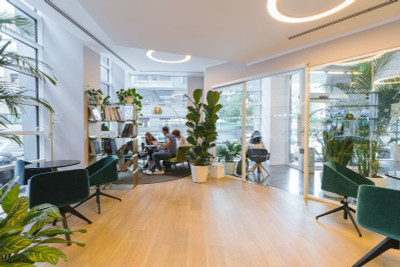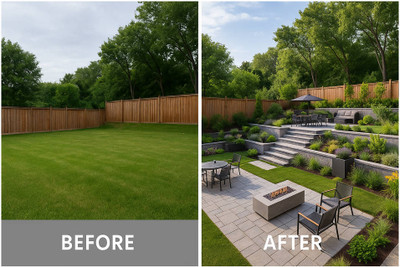Wayfinding with Greenery: Directing Foot Traffic Using Planters
Posted by Jason Wyrwicz on Jun 5th 2025
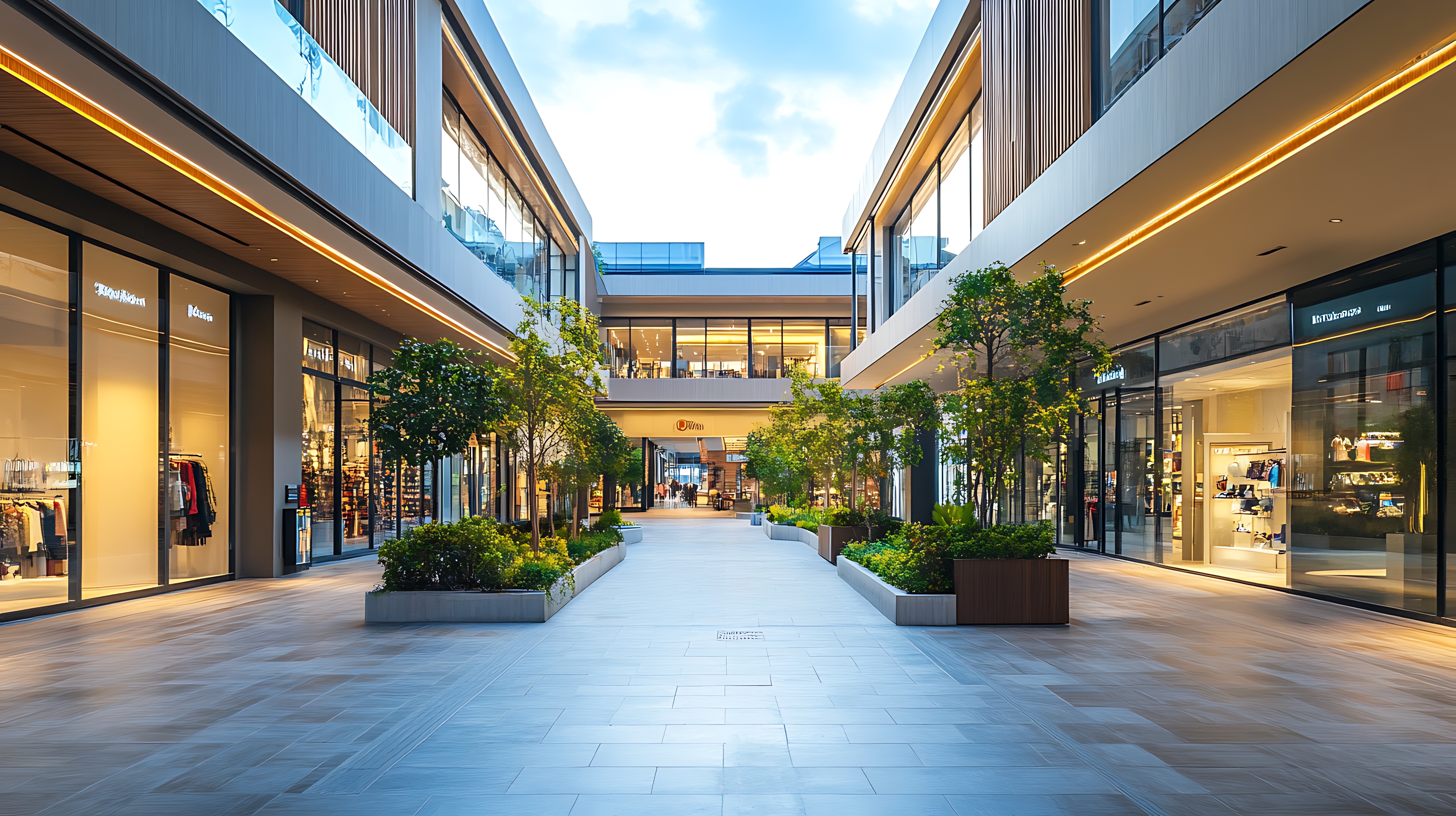
Ever wandered around a mall or airport, unsure where to go, wasting time, and getting frustrated? You’re not alone - traditional signage often falls short. Signs get missed, are placed too high, or include too much information.
This results in lost time, stress, and confused visitors. But what if there was a better way, one that feels intuitive instead of forced? Strategically placed planters make it all possible.
In this article, we’ll give you a practical blueprint for using planters to guide people naturally. With smart placement and a few key principles, you can direct foot traffic in a way that feels elegant and effortless.
Why Environmental Wayfinding Still Fails (and How Plants Fix It)
Even in modern places packed with signs, people still get lost. A 2020 study found that nearly 40% of people feel stressed in large environments like airports, malls, and hospitals simply because they don’t know where to go.
That’s because wayfinding isn’t just about maps or arrows. Our brains look for clues in our surroundings; things we sense without thinking. When those clues are missing or too much to take in, we get disoriented fast.
This is where planters can help - and they’re often overlooked.
Biophilic design means bringing nature into indoor spaces. And it works. Studies show that natural features help people feel calmer, think more clearly, and find their way more easily.
According to a study by Terrapin Bright Green, natural elements in architecture can boost cognitive performance and wayfinding accuracy. Plants act like landmarks for the brain - easy to notice, soothing to look at, and helpful for remembering where you’ve been.
How Planters Influence Movement
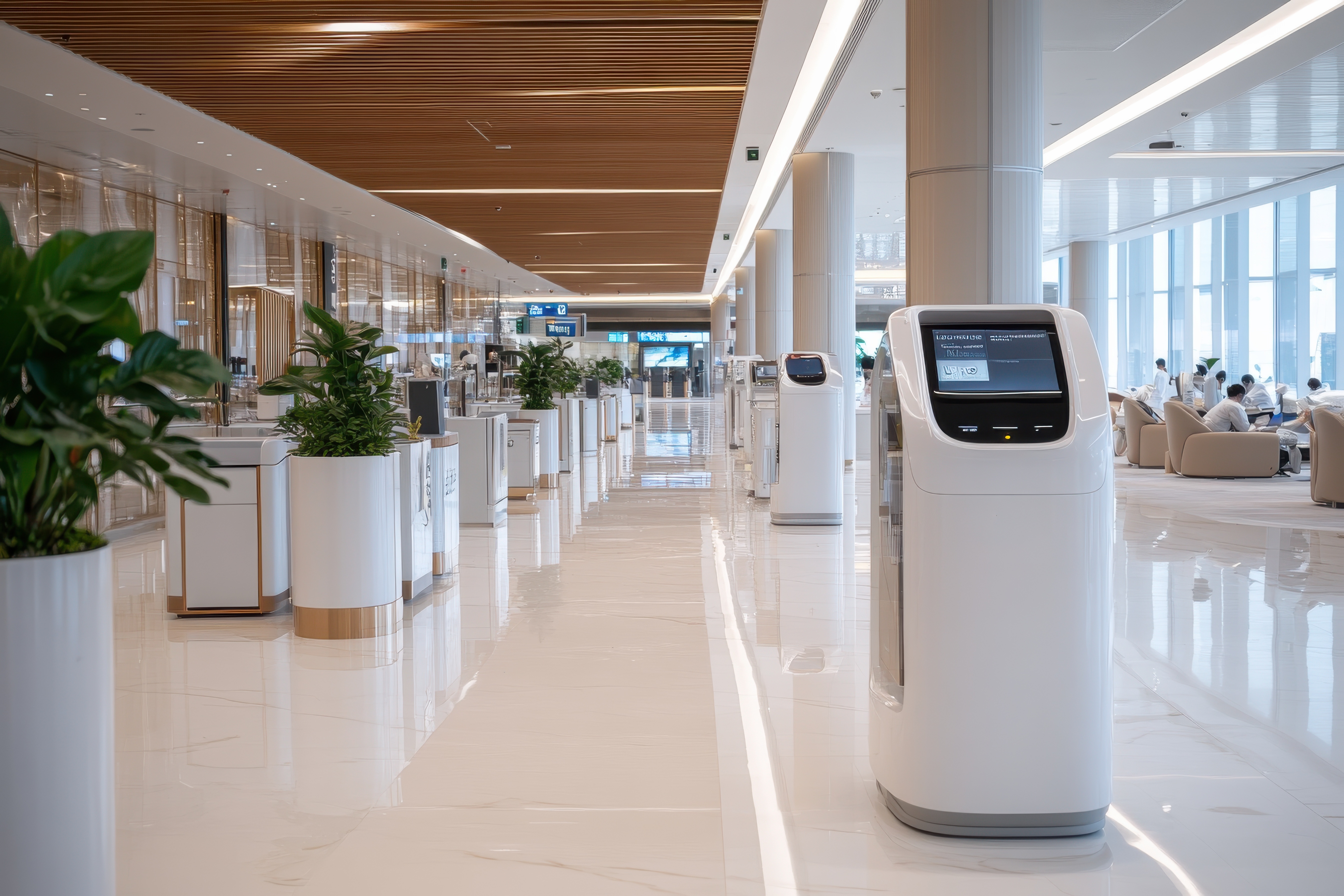
Planters aren’t just decorative. When used with intention, they become tools for guiding foot traffic, helping people instinctively know where to walk, pause, or turn. Here's how simple design choices can create movement without confusion:
Sightlines & focal points
Humans tend to walk toward what they can see clearly. That’s why placing a bright planter at the end of a hallway or near a junction naturally pulls people in that direction. It catches the eye like a gentle beacon.
Planters act as visual anchors. Position them at key moments - where you want people to pause, choose a path, or head toward a destination. Think of them like punctuation in a sentence: they give structure and rhythm to movement.
Color & contrast
If your space has lots of neutrals, beige walls, grey tiles, and white lighting, your planters can become easy visual cues. Use greenery that stands out. Bright leaves like crotons, bird-of-paradise, or even flowering plants signal interest and direction.
For quieter zones, such as lounge spaces in a resort wayfinding design, go for softer greens and gentle silvers. Plants like eucalyptus or peace lilies help create a sense of calm and don’t overstimulate.
Scale & proportion
Not all planters should be the same size. Shorter planters (around waist height) are ideal for subtly steering people down a path. They guide without obstructing sightlines.
Taller planters, on the other hand, are great for marking important transitions, like the entrance to a store, elevator bank, or check-in counter. They create a sense of arrival or change.
Tip: Avoid placing tall planters in narrow areas, where they could block visibility or feel imposing. Save those for wider, open spaces.
Multi-sensory cues
Not everyone navigates using sight alone. Some people, including those with neurodiverse needs or visual impairments, rely on other senses. Scented plants like lavender, mint, or rosemary can serve as natural markers along a route.
On top of that, tactile plants, such as soft lamb’s ear or ornamental grasses, can introduce a gentle sensory layer. It’s subtle, but powerful for enhancing engagement and comfort.
Accessibility note
As inviting as planters can be, it’s essential to keep pathways open. Always maintain a minimum clear width of 915 mm (36 inches). That ensures wheelchairs, mobility aids, strollers, and carts can pass through easily.
How to Design a Planter-Based Wayfinding System: 5-Step Blueprint

Using planters to effectively guide foot traffic takes thought and planning to make sure people move naturally and comfortably through your space.
Follow this simple 5-step blueprint to create a planter-based wayfinding system that will help visitors find their way without stress or confusion.
1. Map existing foot traffic patterns
Start by observing how people already move. Where do they hesitate? Where do they get stuck or double back? Watching real behavior is key because it shows where natural paths and pinch points are.
You can use heat maps if your space has surveillance or tracking tech, or just do manual observations - walk around with a notepad, mark spots where crowds gather or slow down. The goal isn’t to redesign the flow entirely but to enhance and support the paths people already prefer.
2. Mark key nodes
Identify high-traffic areas where people naturally gather or need to make decisions - entrances, exits, escalators, elevators, info desks, and checkouts. These are your anchor points.
Placing planters at these nodes serves two purposes: they catch the eye and guide movement, but also soften and beautify busy or stressful areas. A well-placed planter here helps people pause, reorient, and feel more welcome.
3. Choose planter shapes strategically
Not all planters work the same way. Think about shape and function:
- Tapered square planters are perfect for corners or turning points. They visually soften sharp angles and hint subtly to people that a change in direction is coming.
- Long rectangular planters are excellent for lining corridors. They act like low walls, gently encouraging people to keep moving straight without feeling blocked or crowded.
Stick to one or two planter shapes throughout your space to keep the look cohesive and avoid visual chaos.
4. Code zones with foliage palettes
Give each area a “plant personality” by choosing foliage colors and textures that match the zone’s purpose. This will create a subconscious cue for visitors about where they are and what to expect next.
For example:
- Blues and silvers (like eucalyptus or dusty miller) work well in calm spaces such as lounges and waiting areas, helping visitors relax.
- Bright greens and yellows (crotons or birds-of-paradise) suit active, busy zones like entrances or checkouts, signalling energy and movement.
- Earthy tones (ferns, ornamental grasses) fit transitional areas like corridors or elevator lobbies, easing the shift between zones.
5. Test & tweak
Walk the route yourself. Pretend you’re a first-time visitor. Does the flow feel natural? Are you gently guided by the plants, or do you find yourself confused?
Look out for pinch points where planters crowd the walkway, awkward turns where people might hesitate, or spots where visibility is blocked. Sometimes moving a planter just 20 centimeters can open up a path or improve sightlines dramatically.
Make small adjustments, then test again. Repeat until the route feels smooth and welcoming.
Placement Tactics by Environment
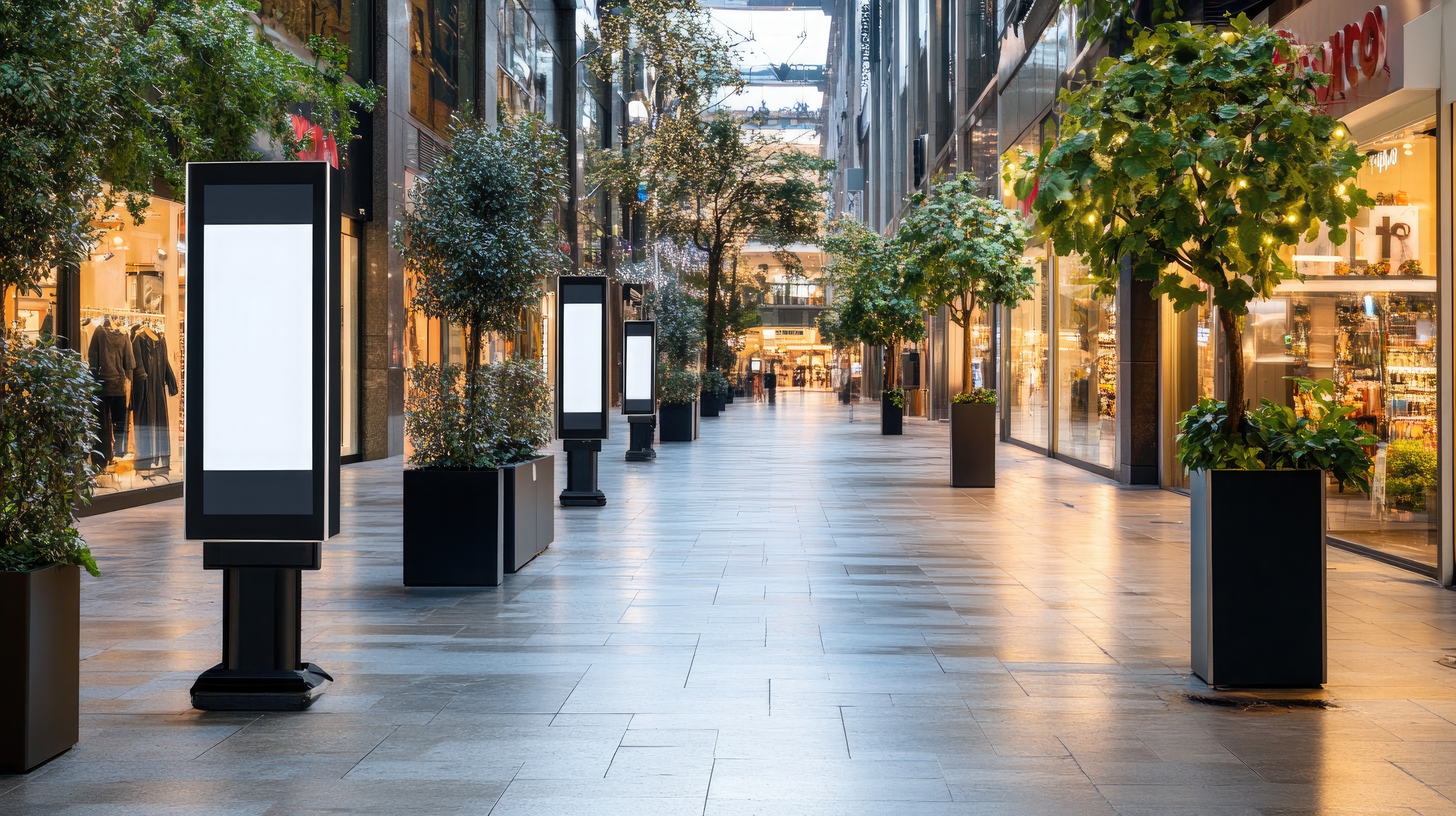
Different spaces call for different tactics. Here’s how you can apply this approach in various settings:
Retail promenades
Use bright foliage near store entrances to increase footfall. Planters also serve as subtle barriers to slow down traffic and increase browsing time.
- Spacing - 2-3 metres between planters.
- Traffic density - High near entrances and food courts.
- Lighting - Lots of artificial light - choose hardy plants that thrive indoors.
Transport hubs
In a train station or airport wayfinding system, durability is key. Fiberglass planters and hardy species like snake plants or palms work well. Use tall planters to mark gates and help funnel movement.
- Spacing - Wider between planters (3-4 m) due to luggage and trolleys.
- Density - Very high during peak hours.
- Lighting - Mixed - supplement with LED grow lights if needed.
Corporate campuses
When it comes to campus wayfinding, you can use planters to lead people between buildings or from parking to reception. They add polish while improving orientation.
- Spacing - Moderate (2-2.5 m).
- Density - Predictable, flows at start/end of day.
- Lighting - Varies; choose indoor/outdoor plants based on placement.
Hospitals & care facilities
Biophilic cues are especially valuable here. Calming, fragrant plants (lavender, basil, peace lilies) help reduce anxiety.
- Spacing - Wide paths (3+m).
- Density - Slow-moving traffic, accessibility essential.
- Lighting - Bright but clinical - greenery softens the feel.
Outdoor events & pop-ups
Planters can double as route markers and décor. Use lightweight, movable options. Consider solar-powered up-lighting inside translucent planters for night events.
- Spacing - Flexible depending on setup.
- Density - High and fast-moving.
- Lighting - Natural, sometimes low in evenings.
Walkway Width vs Recommended Planter Diameter - A Table
| Walkway Width | Max Planter Diameter |
|---|---|
| 1 m | 25 cm |
| 1.5 m | 35 cm |
| 2 m | 45 cm |
| 2.5 m | 55 cm |
| 3 m | 65 cm |
| 4 m+ | 80 cm + |
Selecting the Right Planter & Greenery
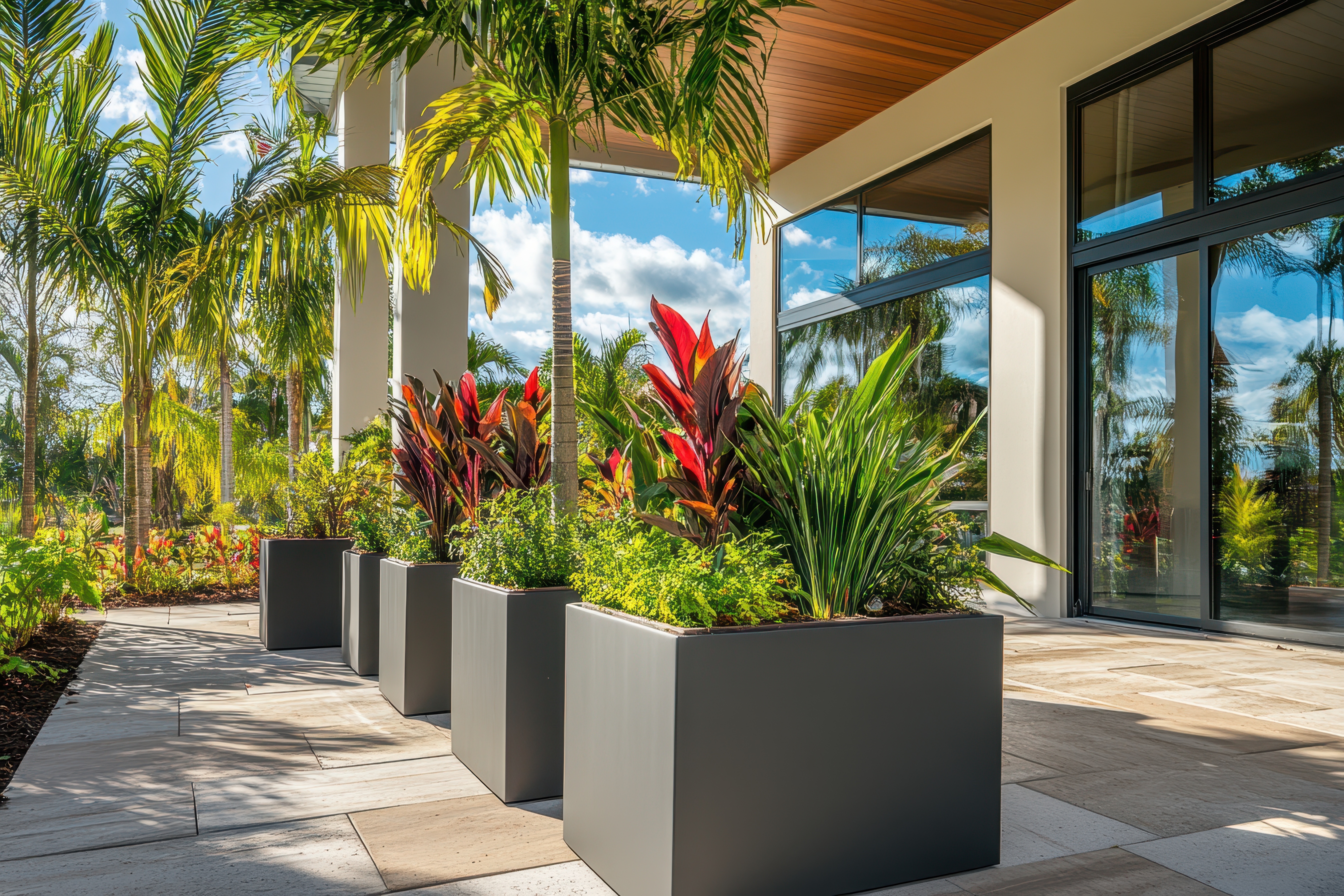
Choosing the right planters and plants is just as important as where you put them. The right combination not only looks great but also makes maintenance easier and keeps your wayfinding system effective over time.
Fiberglass planters have become a top choice for guiding foot traffic, and for good reasons:
- They are lightweight and easy to move - Unlike heavy ceramic or concrete pots, fibreglass planters are light enough for staff to reposition quickly and safely. This makes it easy to tweak your layout as needed without a big hassle.
- They are durable and weather-resistant - Whether your space is indoors or outdoors, fibreglass handles temperature changes, UV rays, rain, and wind without cracking or fading. They keep their good looks season after season.
- They come in customizable styles and colors - Fiberglass planters come in a wide variety of shapes, sizes, and finishes - from elegant matte black to glossy bright colors. This way you can perfectly match your space’s aesthetic while still making your greenery stand out as wayfinding cues.
Consider self-watering inserts for time-saving
Watering schedules can be tricky to maintain, especially in public or high-traffic spaces where plants might otherwise be neglected.
Self-watering inserts are a game-changer here. They hold a water reservoir beneath the soil, allowing plants to soak up water as they need it.
Tip: Look for models with overflow protection. This will help prevent water spills or leaks, which is especially important indoors on hard floors or near electrical outlets.
How to Measure the Success of Your Creative Wayfinding System
You can’t improve what you don’t measure. To know if your planter wayfinding design is working, track these key indicators:
- Track footfall counts - Compare visitor numbers before and after adding planters. More people following the intended paths means your design is guiding them well.
- Watch dwell times - See how long visitors stay in key areas. Longer times in lounges or retail spots suggest people feel comfortable and engaged.
- Ask your visitors - Ask visitors if the space feels easier to navigate and if the greenery helps them feel calmer. This feedback can highlight what’s working and what needs adjusting.
Common Mistakes to Dodge
Don’t let good ideas go bad. Watch for these common errors:
- Overcrowding paths
- Blocking fire exits
- Using clashing planter styles
- Ignoring height consistency
- Choosing high-maintenance plants
- Neglecting lighting conditions
- Skipping safety checks (tipping hazards)
- Forgetting to clean dead foliage
Bring Your Wayfinding Environmental Design to Life with Planters
Wayfinding doesn’t have to rely on arrows, signs, or loud design choices. Sometimes, the most effective solutions are also the most natural. Planters offer a quiet, elegant way to guide people while reducing stress, creating visual flow, and making spaces feel more human.
Whether you’re designing a shopping centre, transport hub, hospital, or event space, greenery can do more than just beautify - it can help people move with ease and confidence.
Ready to guide people naturally? Explore our fibreglass planter range for your next wayfinding project.
FAQs
Do planters obstruct emergency routes?
Only if placed carelessly. Always maintain clear paths and avoid exit routes.
How often must greenery be refreshed?
Depending on the species, plan on refreshing every 6–12 months. Self-watering planters can extend life.
What are the best plant species for low light?
Snake plants, pothos, and ZZ plants all thrive in minimal light.
Can planters replace traditional signage?
They can’t replace all the signage, but make great companions. Think of them as visual nudges.
What’s the cost vs ROI timeline?
Most users see improved traffic flow and customer satisfaction within 3–6 months, with ROI increasing through higher engagement and better wayfinding.

